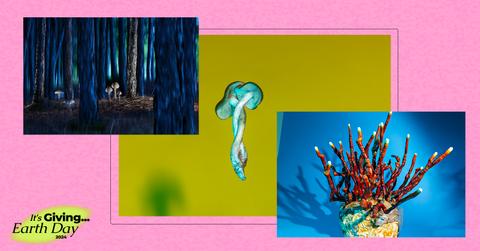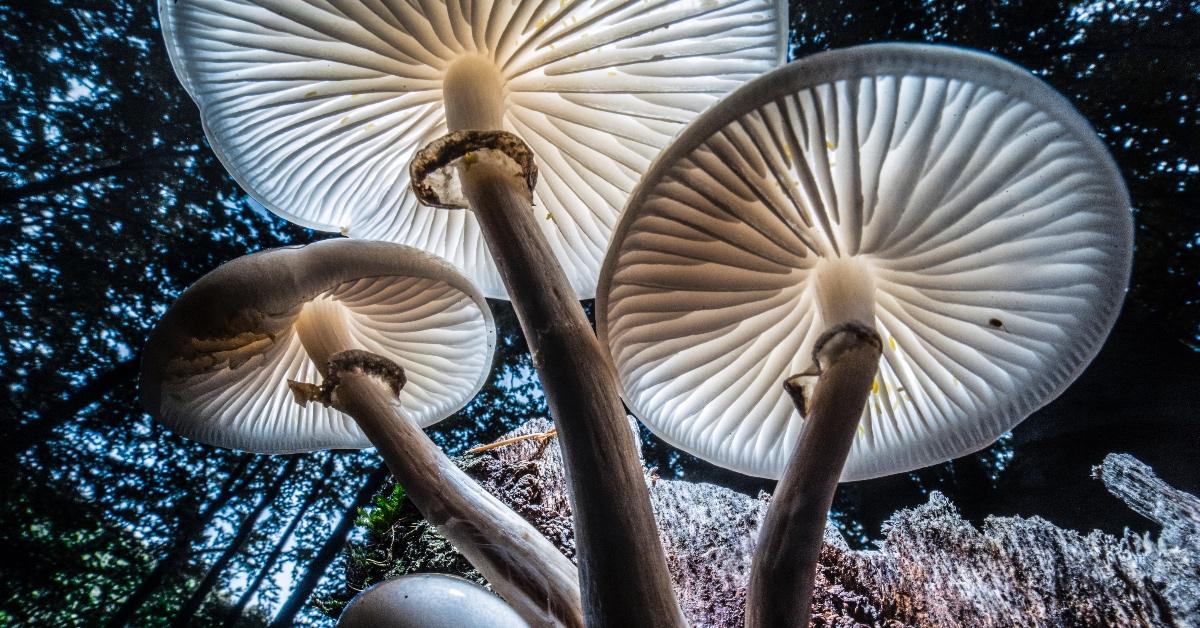It's Giving... Fun With Fungi: A Mycologist Reveals Amazing Developments in the Magical World of Mushrooms (Exclusive)
"I'd say most of my days consist of communicating the world and the wonders of fungi."
Published April 25 2024, 1:00 p.m. ET

Between the rise of pop culture fungi like Cordyceps in HBO's The Last of Us or books such as Entangled Life, people are more curious than ever about fungi. Many regularly eat mushrooms for their nutritional benefits, some people take mushroom-derived supplements, and fungi have even been incorporated into new kinds of fabric known as MycoTEX or mycelium textiles.
For Earth Day 2024, Green Matters spoke exclusively via email to mycologist, Nat Geo Explorer, and Fungi Foundation CEO Giuliana Furci, about all things fungi — including how the language around fungi is changing and what her day-to-day life looks like. Read our Q&A with Furci below!
This interview has been edited and condensed for length and clarity.

OUDEMANSIELLA MUCIDA: Porcelain mushrooms, like these "towering" from a beech tree on Mount Olympus, reach between one and three inches tall.
GREEN MATTERS: How did you first become interested in mycology?
GIULIANA FURCI: I first became interested in mycology after seeing a bright orange mushroom in a forest in southern Chile in 1999. I really wanted to know who that mushroom was. I couldn't find any field guides or books on Chilean fungi, so I decided to write one myself.
GM: As the CEO of the Fungi Foundation, what are some of your proudest achievements thus far?
GF: The inclusion of fungi in the environmental legislation in Chile. I'd further highlight our role in the widespread use of the term Funga and the use of the 3 Fs proposal: flora, fauna, and funga. We started by delimiting the language and helped countries and organizations to adopt mycologically inclusive languages such as National Geographic, Re:wild, and IUCN.
I am extremely proud that we are a Chilean NGO that opened in the USA and now operates globally, with our most recent focus on ethnomycology in India. I am also extremely proud of the free mycological curriculum available in three different languages, which has had thousands of enrollments from students and teachers worldwide.
GM: What are some of the most unexpected or unique ways that fungi are being used today?
GF: The relationship between humanity and fungi is very ancient and fungi has been used for varying purposes since the beginning of our time. One of the most unexpected ways is making high-protein foods that resemble animals and plant products. These products are made from molds or yeasts, and packaging has been made out of sawdust or woodchips and mycelium and fungi that we'd normally see in the woods.
GM: You’re also a Nat Geo Explorer — what does that role entail and what are some of the most fun or interesting aspects of your day-to-day life?
GF: Day to day, there are varying mushroom seasons, which entail me being in different forests, cloud forests, rain forests, deserts, grasslands, and more where I am looking for fungi, documenting fungi, and storytelling around them. Most of my days consist of communicating the world and the wonders of fungi.
GM: Could you talk a little bit about how the climate crisis has affected fungi?
GF: Fungi are organisms that are classified as a kin-dom of their own. Different fungi respond in different ways. Some are threatened by those changes, with their habitats under threat of being lost, while, on the other hand, some species thrive.
GM: Is there anything about the world of fungi you wish more people knew?
GF: There are many ways to be a fungus — they are not just one thing. You can be a fungi as a yeast, mold, lichen, mushroom, as a conk. There are aquatic fungi in freshwater and saltwater systems. There are fungi that live in the air.
People should understand their important role in decomposition and the importance of letting things rot and letting things decompose. There is intrinsic value in decomposition just as we see the value in recycling other things like plastics, metal, and glass. Fungi hold that same value in the natural world.

April 2024 issue of National Geographic.
GM: What are some steps that people can take if they want to learn more about mycology and protecting fungi?
GF: One important thing you can do is log on to the Fungi Foundation website. There, we have many resources to learn more about how to speak with mycological inclusive language, YouTube videos that teach you about ancestral relationships, articles and materials on fungal conservation, and much more. You can check out fungieducation.org to access the free mycological curriculum and learn even more about the wonders of funga.
Also, please check out the Nat Geo feature — it's the first time the publication has featured fungi as its cover story!
This article is part of Green Matters’ 2024 Earth Day programming, It's Giving... Earth Day: A series about the people and organizations who are “giving” Earth Day 24/7. We hope these stories inspire you to embody the spirit of Earth Day all year round.